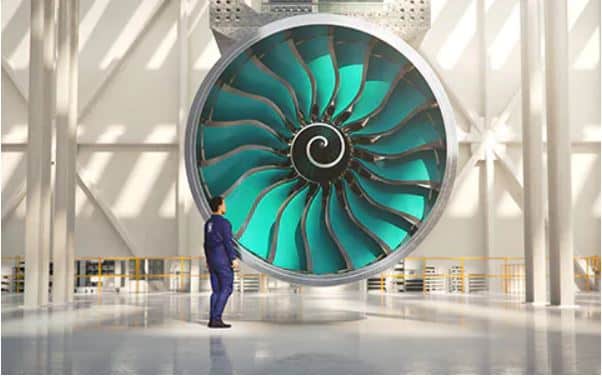Aviation
Engine maker Rolls-Royce reuses spare parts amidst supply chain crunch
Rolls-Royce has reduced its dependency on Russian supply by entering a new relationship with a titanium source in the United States.

According to source In light of supply chain challenges that are generating problems for the aerospace sector, British engine manufacturer Rolls-Royce is refurbishing and recycling spare parts. Rolls-Royce stated in a first-half results presentation on August 4, 2022 that two of the major difficulties the company is facing are rising prices and supply chain disruption.
Airlines are already being impacted by a lack of spare components. Six of Latvia-based airBaltic’s Airbus A220s are unable to fly due to a lack of availability for routine maintenance. Right now, there is a lot of tension in the one aisle area. Everyone started out very slowly, and now they are under pressure to ramp up quickly, according to East.
Rolls-Royce reducing supply-chain risks Kakoullis emphasised that Rolls-Royce has reduced its dependency on Russian supply by entering a new relationship with a titanium source in the United States. Olivier Andriès, the chief executive of French aircraft engine supplier Safran, told analysts that he anticipates the problems with the supply chain will continue and probably through the end in 2023.
With the situation in Ukraine, inflationary pressures, and supply chain restrictions all having an effect on our business, the external environment continues to be difficult. In all, Rolls-Royce reported underlying operating profit of £125 million ($152 million), down from £307 million ($374 million) a year earlier, which the firm claimed was the result of one-time profits in the prior year. It reaffirmed its full-year group targets and stated that it expected operating profit margins to increase in the second half.

Aviation
Boeing, Antonov to Collaborate on Defense Projects

– MOU represents Boeing’s commitment to work with Ukrainian industry
– Includes exploring opportunities for collaborating on in-country support of Unmanned Aerial Systems
A Memorandum of Understanding was signed today by Boeing and Antonov Company to investigate potential collaboration on defense-related projects.
“We’re happy to keep collaborating with the Antonov Company to help Ukraine’s economic development and expansion,” stated Ted Colbert, CEO and president of Boeing Defence, Space, & Security.
Airbus and the Antonov An-225: The Best Partnership:Click here
“This agreement demonstrates our ongoing efforts to find more opportunities to work with Ukrainian industry, which was underscored by our signing of the Ukrainian Defence Industry Compact earlier this year.”
The areas of potential collaboration identified in the agreement consist of training, logistical support and overhaul services for tactical Unmanned Aerial Systems utilized by the Ukrainian Armed Forces, which includes the ScanEagle. In addition, the companies will also explore opportunities for Antonov to provide engineering support to Boeing.
The six largest cargo aircraft ever built in the aviation industry:Click here
“A strong, innovative, and efficient defense industry is key to sustainable economic development and national security, and we are extremely excited to collaborate with Boeing,” said Ievhen Gavrylov, CEO of Antonov Company.
This agreement brings a whole new level of opportunity to implement the latest and most effective solutions – in addition to the possibility of future projects with Boeing in the aerospace and defense industry.”
-

 Travel1 week ago
Travel1 week agoAir India to Expand US Operations with Three New Routes After a Decade
-

 Travel2 weeks ago
Travel2 weeks agoWhy We Should Avoid These Stamps in a Passport
-

 Airlines1 month ago
Airlines1 month agoInvestigations Reveal Fake Chinese Titanium in Boeing and Airbus Jets
-

 Tech4 weeks ago
Tech4 weeks agoChina’s CATL Plans 1,800-Mile Electric Plane Launch by 2027
-

 Airport3 days ago
Airport3 days agoTop 10 Largest Airports in the World by Size
-

 Aerospace4 weeks ago
Aerospace4 weeks agoChina’s Fighter Jets Turn Wings into Autonomous Drones
-

 Airlines4 days ago
Airlines4 days agoAir India Rolls Out A350s for Delhi-New York JFK and Newark Routes
-

 Defence3 weeks ago
Defence3 weeks agoBoeing Enhances Chinook with New Engines and Block II Upgrades at $96 Million







